Heritage
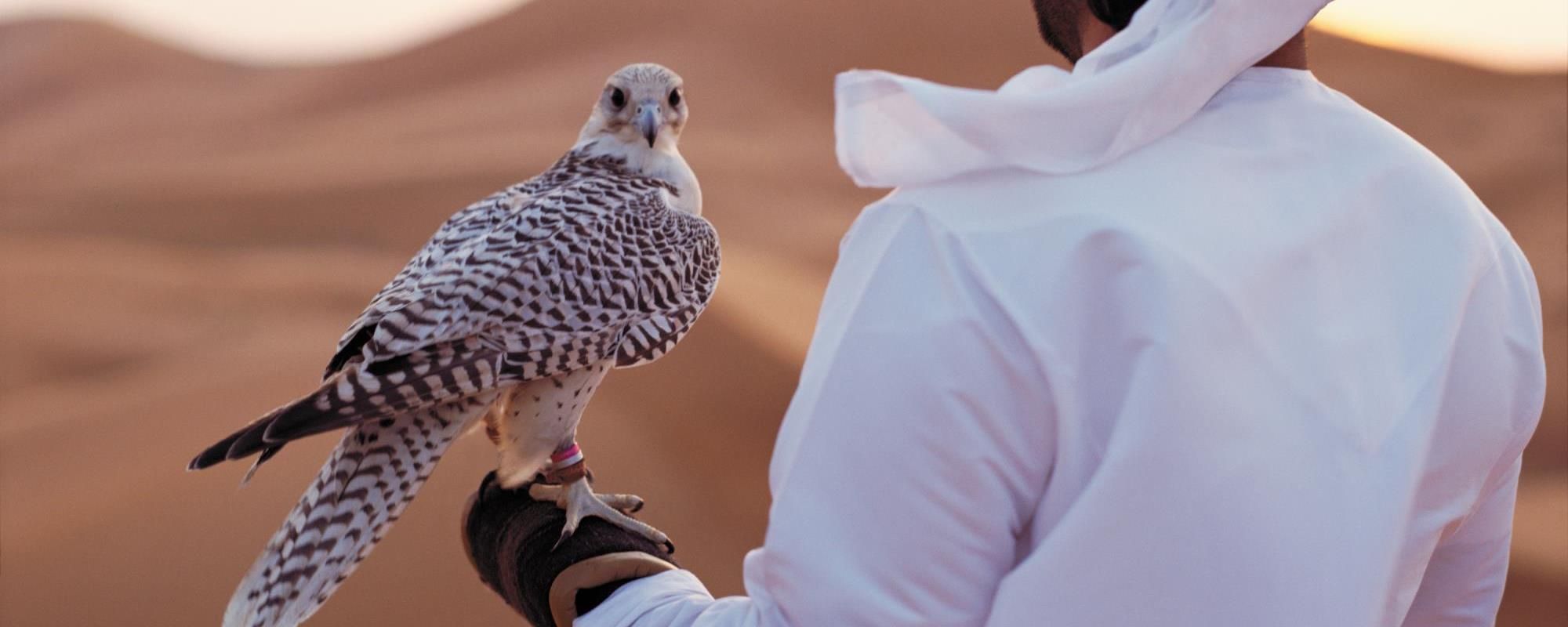
FALCONRY
This is a traditional Emirati sport practised for more than 2,000 years with skills being passed down through generations. Falconry requires patience and co-operation between the falconer and his bird. By treating his bird gently and with empathy, the falconer gains its trust and obedience. Emirati falconers developed special breeding and rearing methods.
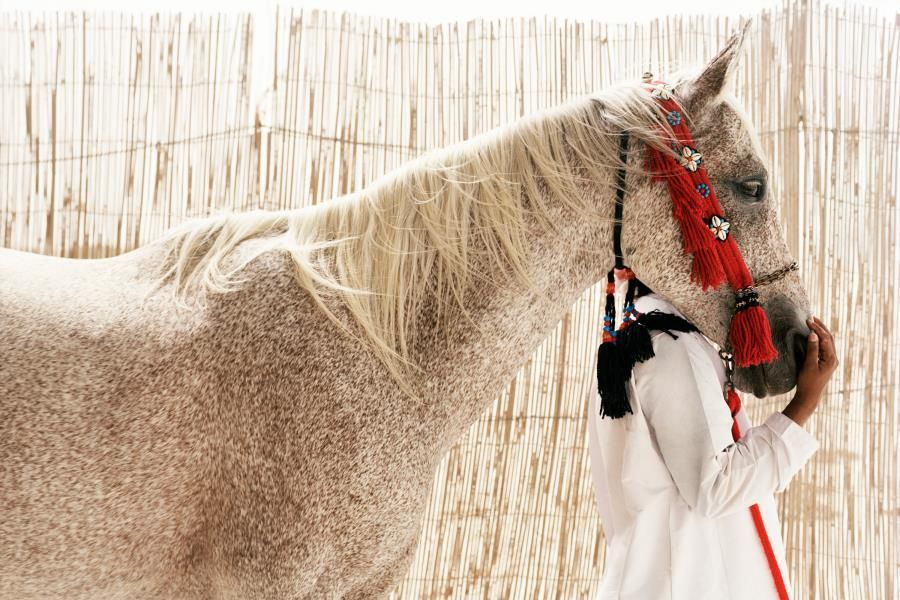
ARABIAN HORSES
Horses are of great heritage significance in UAE, which has a wealth of equestrian talent.
Famous for their wide, flat forehead, soulful eyes, broad muzzle, erect ears, slender neck and flowing shining mane, and renowned for their beauty, loyalty, strength and intelligence, Arabian horses are an intrinsic part of Emirati’s traditions.
In his book, ‘Falconry: Our Arab Heritage,’ the late UAE founder, Sheikh Zayed Bin Sultan Al Nahyan, describes the essential techniques of catching birds. In one method, the hunter drills a hole in the ground and hides himself between trees, and then uses a pigeon as a trap to catch the falcon. He takes the pigeon out of the hole and remains in control of its movements through a thread tied to its leg. As soon as the falcon jumps on its prey, the hunter pulls the thread gently until the falcon is in his possession. Use of a net is another method of capturing falcons where a pigeon is once again the prey. The falcon is netted as soon as it holds its prey. The hunter grabs the falcon, takes it out of the net and hands it to the falconer to start training it.
Close to Abu Dhabi International Airport, the Abu Dhabi Falcon Hospital is the world’s largest, and most advanced, falcon hospital. Its highlight is a falcon display museum as well as a facility with free-flying falcons.
Guided tours of this award-winning specialist hospital are available. You can visit the luxurious wards where the birds are kept, explore the museum, which gives an insight into the noble desert sport of falconry, or try your hand at the pursuit in the lush gardens.
AL SADU
This is a traditional form of weaving practised by Bedouin women in rural communities. Traditionally men shear goats and camels, and the wool is cleaned and prepared by the women. The yarn is spun on a drop spindle, then dyed using local plant extracts (such as henna or saffron), and then woven on a floor loom using a warp-faced plain weave.
The traditional colours are black, white, brown, beige and red, with distinctive patterns in the form of narrow bands of geometric designs. The result is colourful products – clothing, camel and horse decorations, Bedouin tents, majlis floor pillows, carpets and mats.
Traditionally, women gather in small groups to spin and weave, exchanging family news and occasionally chanting and reciting poetry. Such gatherings are also the means of transmitting the tradition: girls learn by watching, and are gradually given tasks to do, such as sorting the wool, before learning the more intricate skills involved.
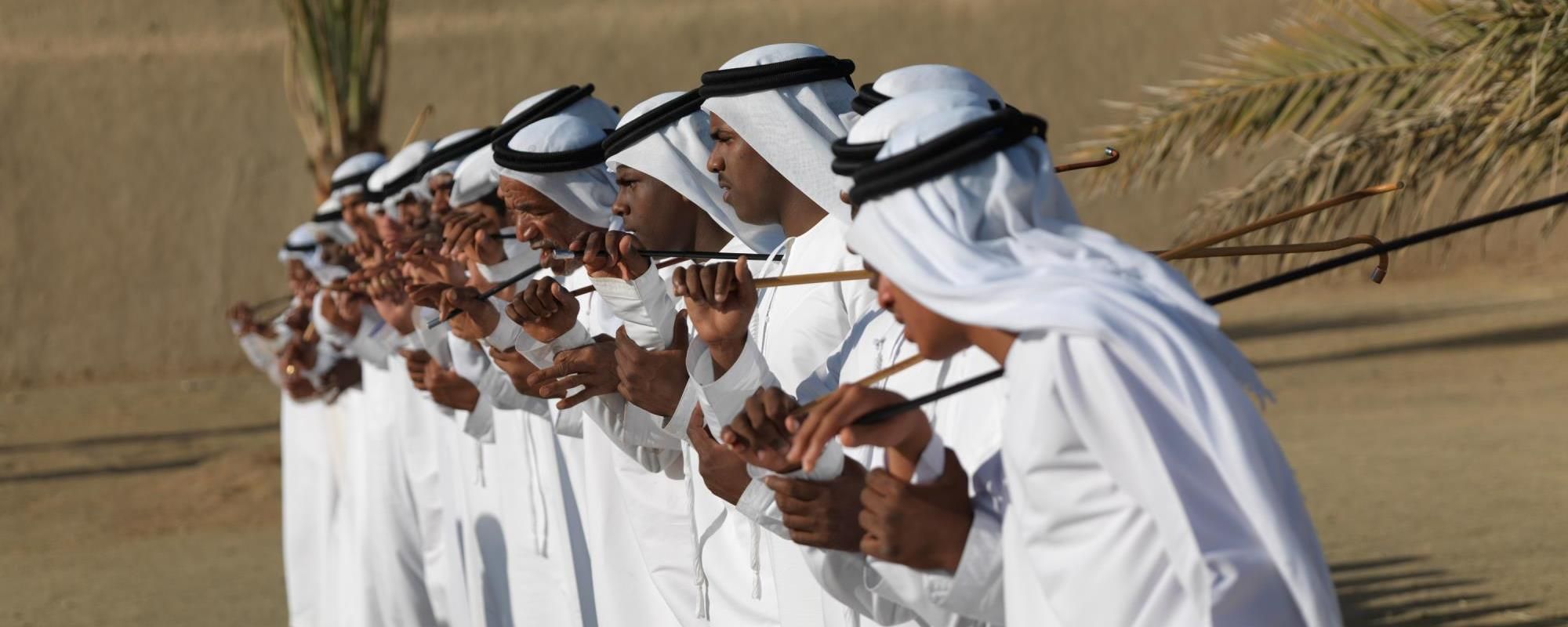
AYALA DANCING
Generally known as the ‘stick dance’, this traditional fascinating UAE folk dance is accompanied by drumming and performed by two rows of dancers facing one another. Dancers are positioned close together in rows, signifying the unity and co-operation amongst tribal people.
The dance is usually performed at top events, national ceremonies and weddings in the UAE.
SALUKIS
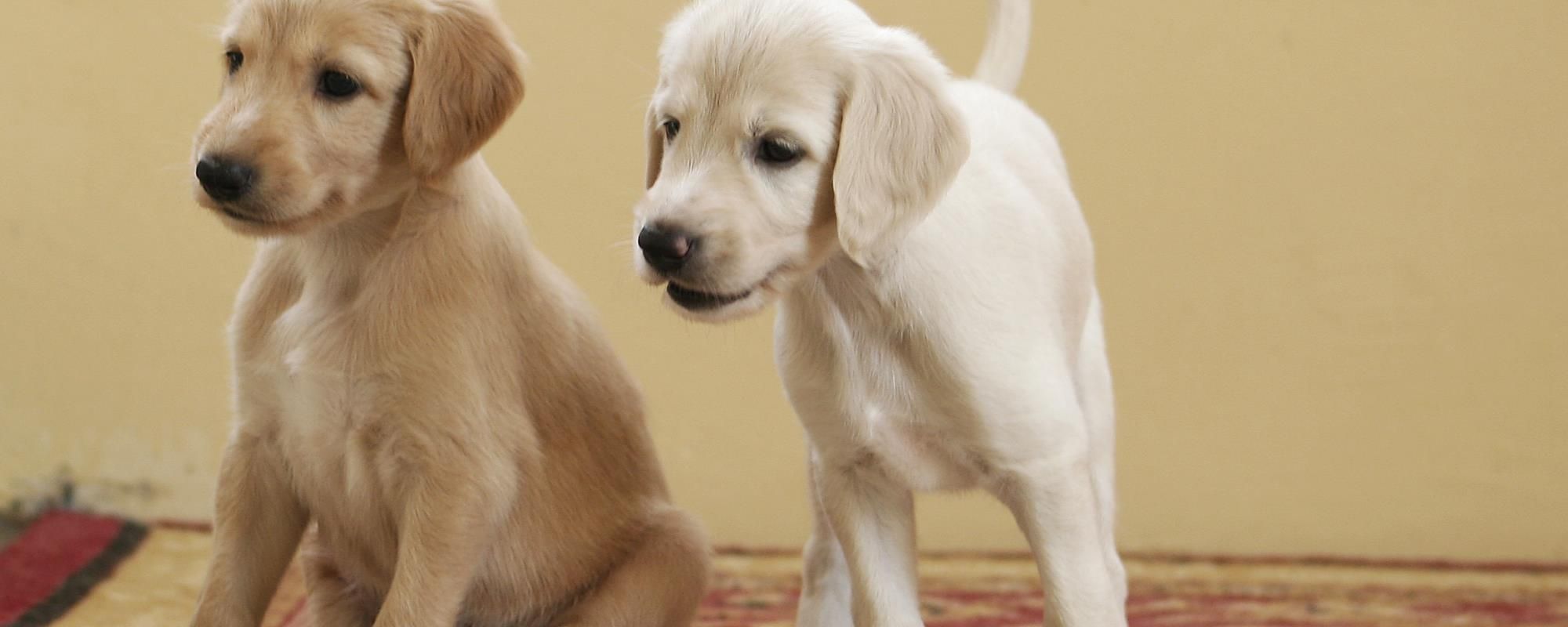
A traditional part of Bedouin culture, Salukis are a distinctive breed of dog found in desert regions and famed for their hunting prowess. One of the oldest known breeds of domesticated dog, salukis come in two varieties, smooth and feathered. Bedouins hunt with Salukis in packs of two to six hounds, and they train their dogs to hunt with falcons as part of a team. Falcons usually spot and hover over their prey, whilst Salukis speed off towards the target – often kilometres away- as the hunters follow on their horses or camels. Today Emiratis still hunt with their salukis, who run next to cars at a pace of 30 -40 miles per hour. The Rub al Khali is the favourite hunting ground, where tents and villages around the edges of the desert remain strongholds of Saluki breeding. Behind Abu Dhabi International Airport, the Saluki Centre honours the desert traditions of hunting, training and breeding salukis and invites visitors to learn more about their unique traits.
Culture
UAE’s National Dress
The Arab national dress is a symbol of pride and identity that has been designed with the dual intent of providing comfort and adhering to religious beliefs.
Men wear an ankle-length, loose-fitting garment made of white cotton, known as a kandora or dishdasha. A ghutra covers the head and is held in place by the agal, a black cord.
Traditionally, women wear an abaya―a long, black flowing light coat over their clothing. This is worn over their western clothes or a traditional long-sleeved full-length dress known as a jalabeya. A black scarf called a shayla is draped over the head.
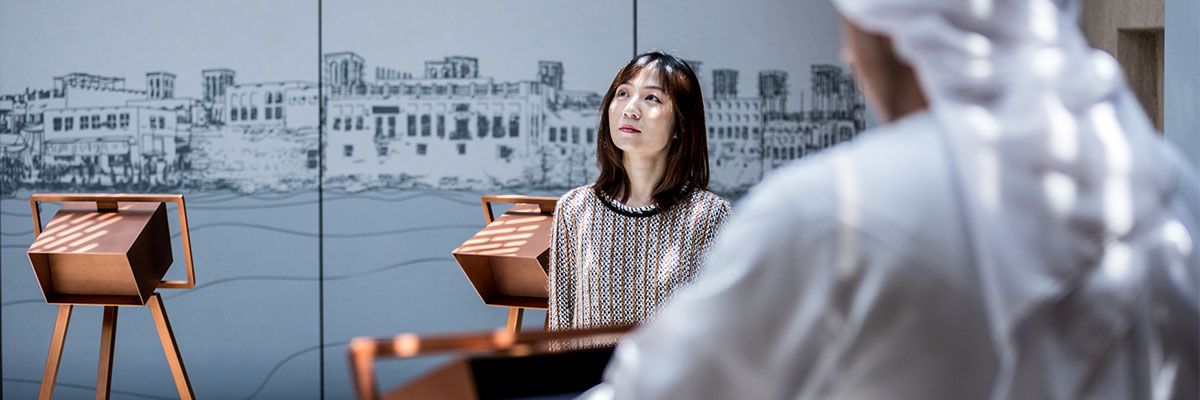
Al Shindagha Museum
Set along the historic waters of Dubai Creek, Al Shindagha Museum tells the proud story of the nation’s past and reverent traditions. The museum’s ‘Dubai Creek: Birth of a City’ is a state-of-the-art multimedia experience that guides visitors through the area’s dramatic development over centuries.
The carefully-curated tour features interactive videos, touch displays and historic photographs and artefacts so visitors can gain insight into what it was like for Emiratis to raise a family by the waterways, and how maritime trade affected their livelihoods.
Afterwards, stop by the Perfume House and discover the story behind Emirati fragrances. It highlights how scents played an integral role in the nation’s history with a legacy that still lives on today. Visitors can explore Emirati culture via scent and learn stories associated with the perfumes that played an integral role in trade within the Emirates.
Breathing new life to one of the city’s oldest neighbourhoods, Al Shindagha Museum offers an inimitable glimpse into Dubai’s vibrant past.
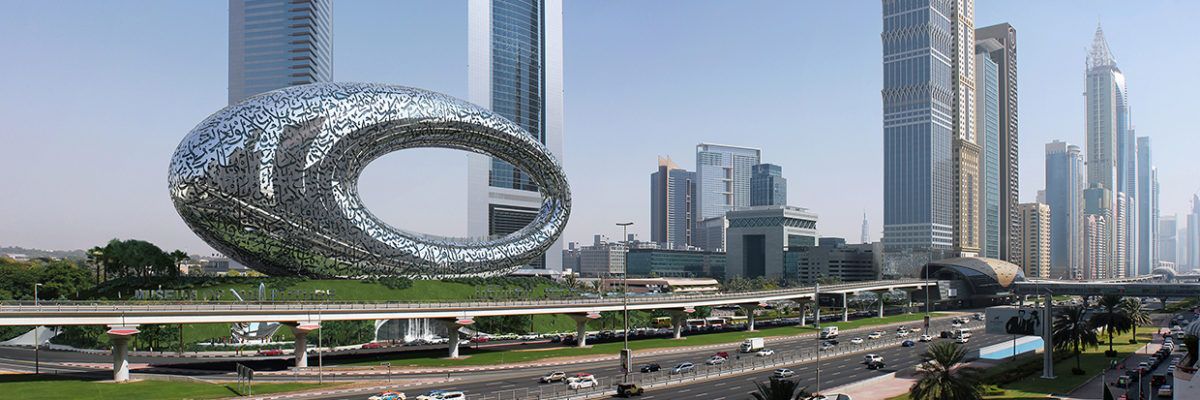
Museum of the Future
The Museum of the Future will focus on how technology can evolve in the next 20 years.
Founded by the Dubai Future Foundation, the museum will demonstrate how technology can enhance our bodies and minds, as well as manage social and economic solutions. Most of all, it will help us re-imagine climate change for 2050.
It will display the world’s greatest innovations, prototype ideas and inventions. Unlike a typical museum, it will be first of its kind where you’ll can interact with the displays.
There will be advanced courses, workshops and talks using existing cutting-edge technology and scientific solutions to explore futuristic innovations.
The museum will focus on three challenges of climate change: the supply of fresh water; food security; and building/rebuilding cities. All of these will transform how we live for a better humanity and stronger global economy.
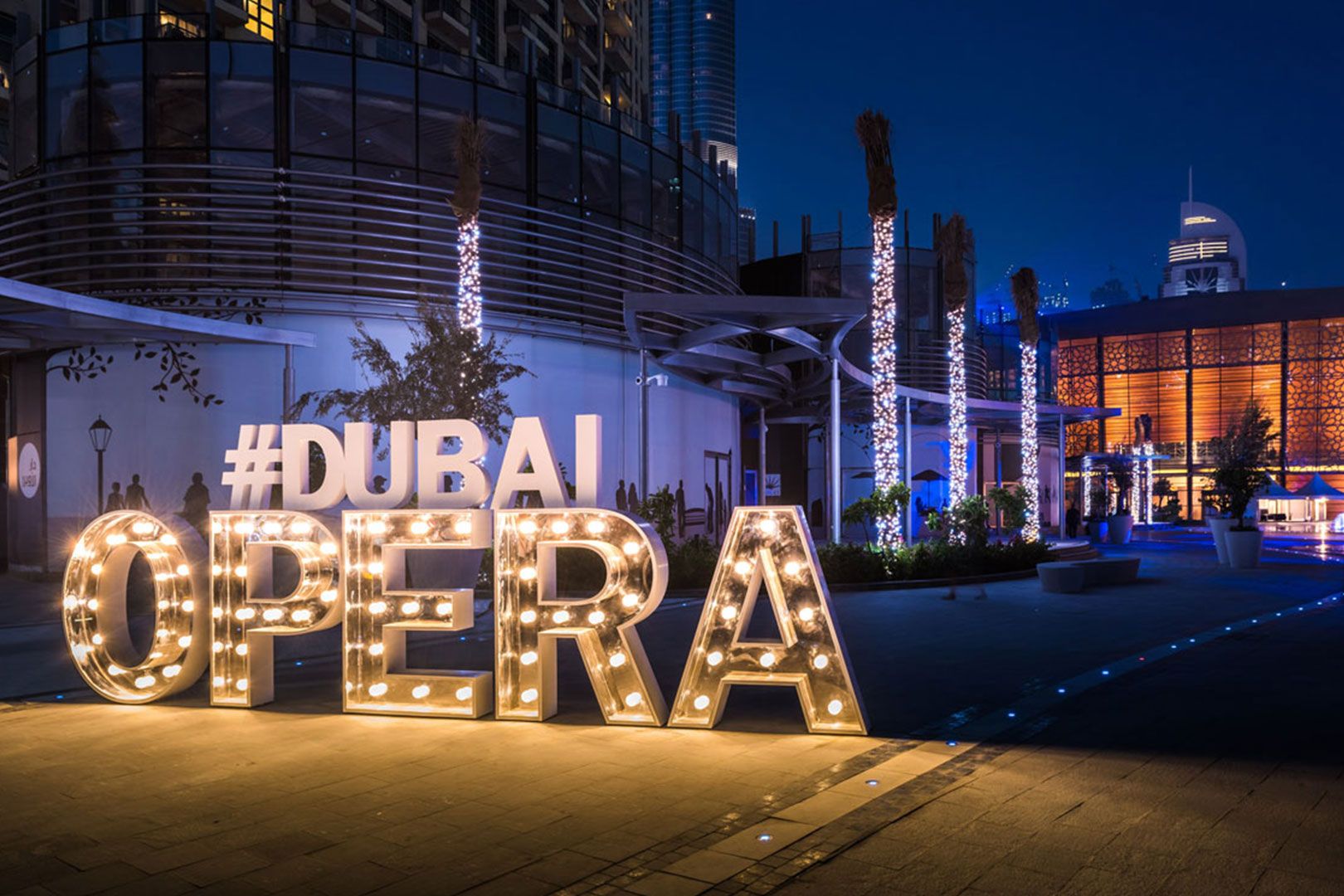
Dubai Opera
The shimmering dhow shaped structure lies across The Dubai Fountain from The Dubai Mall, and attracts a rich mixture of homegrown and visiting entertainment from around the world.
Janus Rostock – the architect behind this masterpiece, designed the building in a dhow-shape. Its wood panelled interior and cascading chandelier offers a luxurious entertainment experience.
The iconic performing arts destination also has the ability to transform from a traditional theatre into a concert hall, and even to a flat floor. The space caters to a wide variety of performances and entertainment styles.
In theatre mode, over 2,000 people can be comfortably seated for ballets, large-scale drama productions and even lectures. When changing to concert mode, towers and reflectors are placed on stage to create an immersive sound experience.
Complementing your experience is the chic rooftop restaurant The Loft at Dubai Opera, offering sumptuous pre-and-post theatre dining and breathtaking views of the famous Burj Khalifa, making it the ultimate dining occasion.
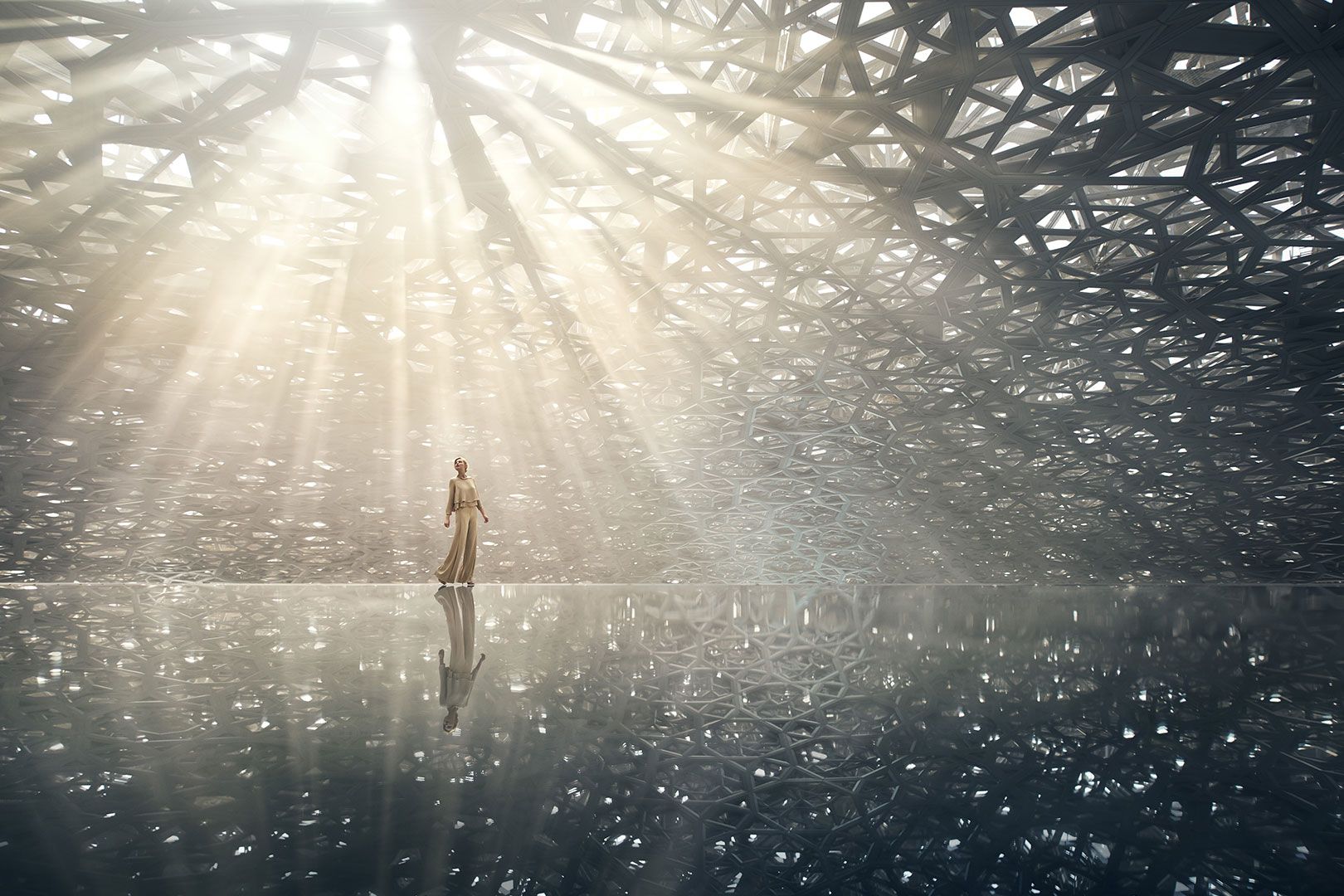
Louvre Abu Dhabi
The iconic Louvre Abu Dhabi is the first universal museum in the Arab World that translates the spirit of openness of cultures. As one of the premier cultural institutions located in the heart of the Saadiyat Cultural District, the art-lovers dream displays the works of historical, cultural and sociological significance from ancient times to the contemporary era.
Designed by Pritzker-prize winning architect Jean Nouvel, the Louvre Abu Dhabi encompasses 9,200 sq. m of galleries including the Permanent Gallery and a Temporary Gallery that is enriched by loans from many notable French museums including Musee du Louvre, Musee d’Orsay, and Centre Pompidou.
Recreating parts of UAE’s integral cultural elements, Nouvel designed a falaj-inspired water system running through the museum, inspired by ancient Arabian engineering whilst the orderly lace dome borrows inspiration from the interlaced palm leaves traditionally used as roofing material in many parts of the country that results in an enchanting play of light.
The juxtaposition of different civilizations in the same spaces, the Louvre Abu Dhabi illustrates similarities and exchanges from the shared human experience going beyond geography, nationality, and history.
